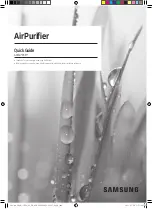
REYQ8~16P8Y1B
VRVIII System air conditioner
4PW39996-1A
Installation manual
1
C
ONTENTS
Page
1. Introduction ................................................................................1
2. Main components.......................................................................2
3. Selection of location ...................................................................3
4. Inspecting and handling the unit ................................................4
5. Unpacking and placing the unit ..................................................4
6. Refrigerant piping.......................................................................4
6.1. Installation tools ........................................................................... 5
6.2. Selection of piping material.......................................................... 5
6.3. Pipe connection ........................................................................... 5
6.4. Connecting the refrigerant piping................................................. 5
6.5. Protection against contamination when installing pipes .............. 6
6.6. Example of connection ................................................................ 7
8.1. Internal wiring – Parts table ....................................................... 10
8.2. Optional parts connector ........................................................... 10
8.3. Power circuit and cable requirements ........................................ 11
8.4. General cautions........................................................................ 11
8.5. System examples ...................................................................... 11
8.6. Leading power line and transmission line .................................. 12
8.7. Field line connection: transmission wiring.................................. 12
8.8. Field line connection: power wiring ............................................ 13
8.9. Wiring example for wiring inside unit ......................................... 14
9. Pipe insulation..........................................................................14
10. Checking of unit and installation conditions .............................14
11. Charging refrigerant .................................................................15
11.1. Important information regarding the refrigerant used ................ 15
11.2. Precautions when adding R410A .............................................. 15
11.3. Stop valve operation procedure ................................................. 15
11.4. How to check how many units are connected............................ 16
11.5. Additional refrigerant charge...................................................... 16
11.6. Procedure for inputting the additional refrigerant
charge weight into the PCB ....................................................... 19
11.7. Checks after adding refrigerant ................................................. 20
12. Before operation.......................................................................20
12.1. Service precautions ................................................................... 20
12.2. Checks before initial start-up ..................................................... 21
12.3. Field setting ............................................................................... 21
12.4. Test operation ............................................................................ 23
12.5. Final check after installation ...................................................... 24
13. Service mode operation ...........................................................25
14. Additional refrigerant charging method ....................................25
15. Caution for refrigerant leaks.....................................................26
16. Disposal requirements .............................................................26
1.
I
NTRODUCTION
This installation manual concerns VRV inverters of the Daikin REYQ-P
series. These units are designed for outdoor installation and used for
cooling and heat pump applications. The REYQ8~16P system is a single
outdoor system and can not be combined with other outdoor units in a
multi outdoor system. This unit has rated cooling capacities ranging from
22.4 to 45.0 kW and rated heating capacities ranging from 25.0 to
50.0 kW.
For changing the refrigerant flow to indoor units, the REYQ-P system
can be combined with BS units of the types BSVQ100P, BSVQ160P
and BSVQ250P only. Other BS unit types will cause malfunctions
when combined with the REYQ-P system.
The REYQ-P units can be combined with Daikin VRV indoor units for
air conditioning purposes suitable for R410A.
The present installation manual describes the procedures for
unpacking, installing and connecting the REYQ-P units. Installation
of the indoor units is not described in this manual. Always refer to the
installation manual supplied with these units for their installation.
REYQ8P8Y1B
REYQ14P8Y1B
REYQ10P8Y1B
REYQ16P8Y1B
REYQ12P8Y1B
VRVIII System air conditioner
Installation manual
READ THIS MANUAL ATTENTIVELY BEFORE STARTING
UP THE UNIT. DO NOT THROW IT AWAY. KEEP IT IN
YOUR FILES FOR FUTURE REFERENCE.
IMPROPER INSTALLATION OR ATTACHMENT OF
EQUIPMENT OR ACCESSORIES COULD RESULT IN
ELECTRIC SHOCK, SHORT-CIRCUIT, LEAKS, FIRE OR
OTHER DAMAGE TO THE EQUIPMENT. BE SURE ONLY
TO USE ACCESSORIES MADE BY DAIKIN WHICH ARE
SPECIFICALLY DESIGNED FOR USE WITH THE
EQUIPMENT AND HAVE THEM INSTALLED BY A
PROFESSIONAL.
DAIKIN EQUIPMENT IS DESIGNED FOR COMFORT
APPLICATIONS. FOR USE IN OTHER APPLICATIONS,
PLEASE CONTACT YOUR LOCAL DAIKIN DEALER.
IF UNSURE OF INSTALLATION PROCEDURES OR USE,
ALWAYS CONTACT YOUR DEALER FOR ADVICE AND
INFORMATION.
THIS AIR CONDITIONER COMES UNDER THE TERM
"APPLIANCES NOT ACCESSIBLE TO THE GENERAL
PUBLIC".
The refrigerant R410A requires strict cautions for keeping
the system clean, dry and tight.
■
Clean and dry
Foreign materials (including mineral oils such as
SUNISO oil or moisture) should be prevented from
getting mixed into the system.
■
Tight
R410A does not contain any chlorine, does not
destroy the ozone layer and does not reduce the
earth's protection against harmful ultraviolet radiation.
R410A can contribute slightly to the greenhouse
effect if it is released. Therefore we should take
special attention to check the tightness of the
installation.
Read
"6. Refrigerant piping" on page 4
these procedures correctly.
Since design pressure is 4.0 MPa or 40 bar (for R407C
units: 3.3 MPa or 33 bar), pipes of larger wall thickness
may be required. The wall thickness of piping must be
carefully selected, refer to paragraph
for more details.
Summary of Contents for VRVIII REYQ-P8
Page 32: ...4PW39996 1A Copyright Daikin...






































